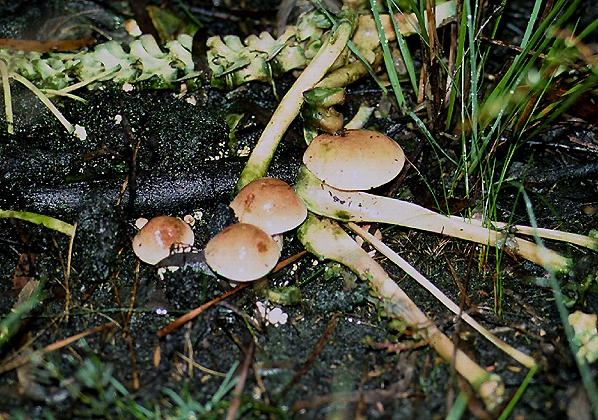
Hebeloma aminophilum R.N.Hilton & O.K.Mill.

Common name: Ghoul Fungus.
Description: The convex caps commonly measure 610 cm in diameter when fully mature, but they can be smaller. The surface is smooth, sticky and at first pale pinkish brown, becoming more distinctly brown as the fungus matures. The margins at first overlap the gills but this feature may disappear as the caps age. The gills are adnate, have a very finely fringed margin and are dull pink but develop brown tints as the spores mature. The stems are 58 cm long and 12 cm thick, and are dry, white, partially hollow or pith-filled and lack a ring.
The spores measure 810 × 46 µm and are ellipsoidal, finely rough with tiny warts and brown. The spore print is brown and usually has pink tints.
Substratum: Hebeloma aminophilum is found on soil beneath the remains of dead animals such as small marsupials.
Distribution: Known from Victoria, Tasmania and Western Australia. The records for Queensland and New South Wales are uncertain but Hebeloma aminophilum will almost certainly be found in southern New South Wales.
Notes: This species is easy to recognise because of its very unusual habitat: it utilises the nitrogen-enriched soil near an animal corpse. Many species of Hebeloma are mycorrhizal, and it is therefore likely, but uncertain that H. aminophilum is also mycorrhizal. The fruiting bodies can be found (usually in small clusters) amongst or pushing aside some of the bones of a rotted animal carcase.
